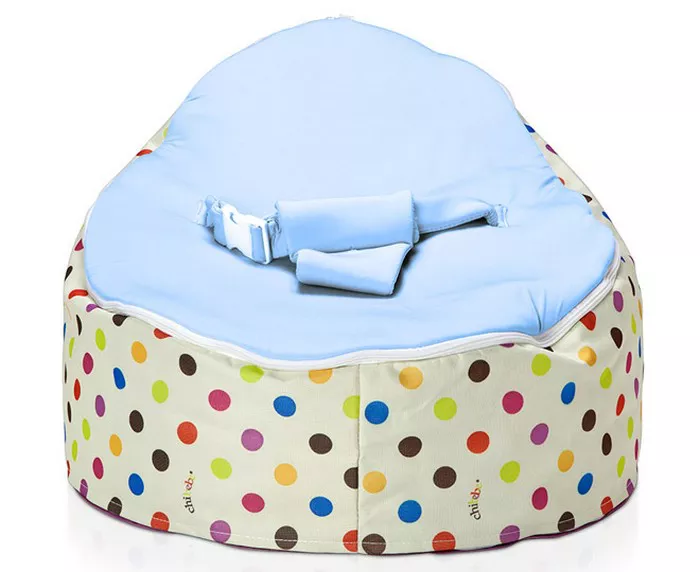In recent years, the market has seen a surge in the popularity of snuggle pods, also known as baby loungers or baby nests. These cozy, nest-like cushions provide a snug environment for infants, offering comfort and security akin to being cradled in a caregiver’s arms. However, with the rise in usage, concerns about their safety have also emerged. Parents and caregivers understandably want to ensure that the products they use for their little ones are not only comfortable but also safe. This article delves into the safety considerations surrounding snuggle pods, exploring their benefits, potential risks, and best practices for use.
Understanding Snuggle Pods: What Are They?
Before delving into the safety aspects, it’s essential to understand what snuggle pods are and how they function. Snuggle pods are soft, cushioned nests designed to provide a cozy environment for infants to rest, lounge, or play. They typically feature a padded base with raised edges that create a secure space for the baby. Snuggle pods come in various shapes, sizes, and designs, catering to different preferences and needs.
The Appeal of Snuggle Pods: Benefits for Babies and Parents
Snuggle pods offer several benefits that contribute to their popularity among parents and caregivers:
1. Comfort: The soft, plush material of snuggle pods provides a comfortable surface for infants to rest on, mimicking the feeling of being held.
2. Portability: Many snuggle pods are lightweight and portable, making them convenient for travel or moving around the house.
3. Versatility: Snuggle pods can serve multiple purposes, functioning as a place for napping, lounging, or supervised playtime.
4. Transitional Aid: Some parents find that snuggle pods help ease the transition from sleeping in a parent’s arms to sleeping in a crib or bassinet.
These benefits make snuggle pods an attractive option for parents seeking practical solutions for infant care.
Safety Concerns: Addressing Potential Risks
While snuggle pods offer comfort and convenience, concerns about their safety have arisen within the parenting community and among regulatory bodies. Some of the primary safety considerations include:
1. Risk of Suffocation: The snug design of snuggle pods, with raised edges around the sleeping area, raises concerns about the potential risk of suffocation, especially if the baby rolls onto their stomach or presses their face against the cushioned sides.
2. Overheating: The soft, plush material of snuggle pods may contribute to overheating, particularly if used in conjunction with heavy bedding or in warm environments.
3. Restricted Movement: Infants placed in snuggle pods may have limited mobility, which could impede natural movements or hinder development milestones, such as rolling over.
4. Positional Asphyxia: Improper positioning within the snuggle pod could lead to positional asphyxia, where the baby’s airway becomes obstructed, compromising breathing.
These safety concerns underscore the importance of using snuggle pods with caution and adhering to recommended guidelines to mitigate risks.
Best Practices for Safe Use
To ensure the safe use of snuggle pods and minimize potential risks, parents and caregivers can follow these best practices:
1. Supervised Use: Always supervise infants when they are using a snuggle pod, especially during sleep or nap time.
2. Placement: Position the snuggle pod on a firm, flat surface away from hazards such as loose bedding, pillows, or cords.
3. Back to Sleep: Place the baby on their back for sleep to reduce the risk of Sudden Infant Death Syndrome (SIDS).
4. Correct Sizing: Choose a snuggle pod that fits the baby snugly without being too tight or restrictive.
5. Temperature Regulation: Monitor the baby’s temperature and ensure adequate airflow to prevent overheating.
6. Limit Usage: Use the snuggle pod for short periods and avoid prolonged or unsupervised use, especially as the baby grows older and becomes more mobile.
7. Regular Checks: Inspect the snuggle pod regularly for signs of wear or damage, and discontinue use if any defects are found.
By following these guidelines, parents can help mitigate potential safety risks associated with snuggle pods and create a safer sleep environment for their infants.
Regulatory Oversight and Consumer Awareness
In response to safety concerns surrounding infant sleep products, regulatory agencies such as the Consumer Product Safety Commission (CPSC) in the United States have increased scrutiny and oversight. Manufacturers of infant sleep products, including snuggle pods, are subject to regulations and standards aimed at ensuring product safety and reducing the risk of harm to infants.
Additionally, consumer awareness and education play a crucial role in promoting safe sleep practices and informed decision-making among parents and caregivers. Resources provided by healthcare professionals, parenting organizations, and government agencies can help disseminate information about safe sleep environments and the proper use of infant sleep products.
Conclusion
Snuggle pods offer a cozy and convenient solution for infant care, providing comfort and support for both babies and parents. However, concerns about their safety highlight the need for caution and adherence to best practices when using these products. By following recommended guidelines, such as supervised use, proper positioning, and temperature regulation, parents can help minimize risks and create a safer sleep environment for their little ones. Regulatory oversight and consumer awareness efforts further contribute to promoting safe sleep practices and ensuring the well-being of infants. Ultimately, finding the right balance between comfort and safety is paramount when considering the use of snuggle pods and other infant sleep products.


